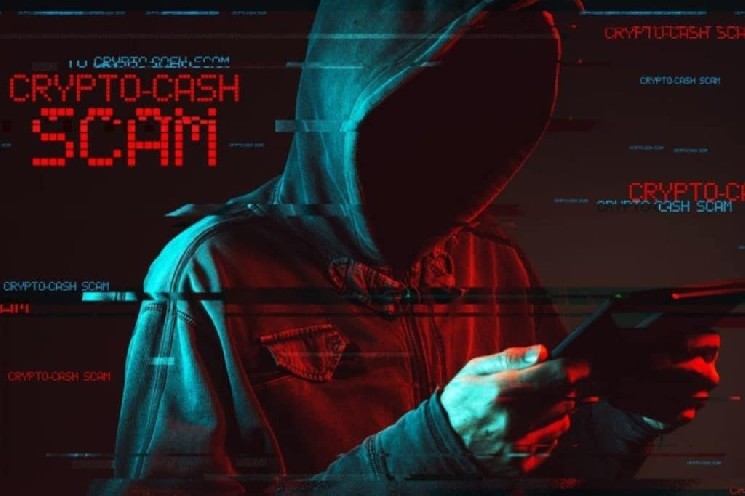Beware of Bitcoin Bank and Intesa Sanpaolo

A piece of dangerous fake news is circulating that needs to be paid attention to because it actually promotes an attempted scam. It is the news about Bitcoin Bank and Intesa Sanpaolo.
Bitcoin Bank is a hypothetical automated trading software that promises easy gains.
Intesa Sanpaolo, on the other hand, is Italy’s largest banking group in terms of the number of branches and market share, with a turnover of more than 20 billion euros. The company is listed on the Milan Stock Exchange, and its shares are included in the Euro Stoxx 50 Index and the Euro Stoxx 50 Banks.
On Intesa Sanpaolo’s official website there is no trace of any service called “Bitcoin Bank,” partly because to date this bank does not offer any crypto services.
Despite this, there is still circulating the false news that Bitcoin Bank is a service offered by Banca Intesa Sanpaolo.
Moreover, there is even a website called BuyBitcoinBank that mentions Intesa Sanpaolo, and although it explicitly says that the bank does not directly offer cryptocurrency services and trading, at a superficial analysis it might seem to connect Bitcoin Bank to Intesa Sanpaolo.
Summary
- Bitcoin Bank and the relationship with Intesa Sanpaolo
- The Bitcoin Bank scam is linked to Intesa Sanpaolo
- Intesa Sanpaolo
Bitcoin Bank and the relationship with Intesa Sanpaolo
Bitcoin Bank is the usual trivial scam attempt that tries to fool the naive by using the name of Bitcoin in a totally misleading way.
Unfortunately, there are several websites that may appear to be legitimate that in turn promote this scam most likely because they earn a percentage of the funds that are stolen in this way.
Bitcoin Bank is easily recognizable as a scam because its website is virtually identical to many other similar scams. Indeed, it is usually the same scam that uses many different names, all made up. This is why the website is essentially the same, only with a few words changed.
For example, Bitcoin Bank may become Bitcoin Code, Bitcoin Up, Bitcoin 360 AI, Bitcode Method, and so on.
The Bitcoin Bank scam is linked to Intesa Sanpaolo
One immediately recognizes that this is a scam because it promises naive visitors to become rich quickly, easily, effortlessly, risk-free, and by “investing” a small amount of money (€250).
Since no system exists, and cannot reasonably exist, that would allow anyone to become rich quickly, easily, effortlessly, risk-free, and by “investing” only 250€, it is immediately clear that these are only lies.
However, the most obvious lie is the one linking Bitcoin Bank to Intesa Sanpaolo, since anyone can go and check on Intesa Sanpaolo’s official website that there is no trace of Bitcoin Bank.
But these fraudsters do not just brag about links between their scam and Bitcoin or Intesa Sanpaolo, as they show a video on their website featuring several famous people, including Bill Gates and Richard Branson. All of these links are completely fake, meaning they are forged by the scammers simply to try to add strength to their campaign to convince the naive.
Generally, when somebody who asks for money, as in this case, does so using lies as motivations to convince the naive, there is always an attempt at fraud behind it. Indeed, when lies are told to convince people to send money, then almost everything said by the scammers is a lie.
Hence it is reasonable to doubt any other information reported on Bitcoin Bank’s website, so much so that it is even possible to imagine that their “automated trading software” actually does not even exist. There is only a website full of made-up numbers, artfully created to convince the naive to give money to these scammers.
All “testimonials” of gains reported on the site are fake, just like the link to Bitcoin, Intesa Sanpaolo, Bill Gates or Richard Branson.
All the “certifications” bragged about on the website are also false, including quotes from well-known newspapers in which the software was allegedly reviewed.
Even the “awards” the software is alleged to have received are merely empty bragging.
The only thing true is the system for sending them money.
What’s more, their scheme is that after the naive people initially deposit €250, they are then asked, of course, to send in more money. They do this both by showing false earnings so as to try to convince the unlucky ones that their system works (but it is only fake data). However, they also do it by calling the unlucky ones insistently to try to convince them by words to pour in more money.
Several stories are unfortunately known of people who have lost as much as tens of thousands of euros in this way.
Intesa Sanpaolo
Intesa Sanpaolo bank has absolutely nothing to do with this, just as Bitcoin has nothing to do with it. It is just one of several brands illicitly exploited by scammers to promote their scam.
Moreover, as already pointed out, not only does Intesa Sanpaolo not offer any service called Bitcoin Bank, but to date, it does not appear to offer any crypto services at all.
In reality, around the world, there are already several incumbent banking groups offering crypto services.
Intesa Sanpaolo is a group that was formed in 2007 from the merger of Banca Intesa and Sanpaolo IMI, but in turn the Sanpaolo IMI group was born in 1998 with the merger of the historic San Paolo banking institution in Turin, with IMI, or Istituto Mobiliare Italiano del Ministero del Tesoro.
Istituto Bancario San Paolo di Torino was founded as far back as 1563, meaning it has been in existence for almost half a millennium. IMI, on the other hand, has been in existence since 1931.
Although it is not surprising that banks with ancient traditions are not particularly accustomed to delving into the risky world of financial innovation, it is worth mentioning that around the world there are also banks with ancient traditions already active in the crypto world.
Italy, however, is a country where financial innovation has a very difficult time taking root, which explains why very few Italian banks still offer crypto services.
And yet it seems they could benefit in no small measure from financial innovation, as shown, for example, by comparing the stock market performance of more and less modern banking groups.
Intesa Sanpaolo’s ISP stock on the Milan Stock Exchange over the past decades has not performed well.
In 1998, when both Banca Intesa and Sanpaolo IMI were born, Banca Intesa shares were worth just over €3.2. Today, Intesa Sanpaolo group shares are worth less than €1.9. So without counting the impact of inflation, the stock has lost 40% in 24 years.
Even worse has been the country’s second-largest banking group, Unicredit. The UCG stock on the Milan Stock Exchange lost more than 90% over the same period, falling from more than €131 to less than €12.
In contrast, for example, FinecoBank stock, one of Italy’s most innovation-conscious banks, has gained 240% since its debut on the Milan stock exchange in 2014, even though it did not go through the great financial crisis of 2008.
If we take only the last eight years as a reference, FinecoBank on the stock exchange has made +240%, while in the same period Intesa Sanpaolo made +51% and Unicredit -62%.
It is, therefore, quite evident that markets are rewarding new innovative banks more than traditional banks that are not very accustomed to financial innovation.
For this reason, it is plausible to imagine that sooner or later Intesa Sanpaolo too will somehow be forced to start offering crypto services to its customers, as for example Fineco itself or other innovative banks already do.






 Bitcoin
Bitcoin  Ethereum
Ethereum  Tether
Tether  USDC
USDC  Dogecoin
Dogecoin  TRON
TRON  Cardano
Cardano  Chainlink
Chainlink  LEO Token
LEO Token  Stellar
Stellar  Bitcoin Cash
Bitcoin Cash  Hedera
Hedera  Litecoin
Litecoin  Monero
Monero  Dai
Dai  OKB
OKB  Cronos
Cronos  Ethereum Classic
Ethereum Classic  Gate
Gate  VeChain
VeChain  Cosmos Hub
Cosmos Hub  Algorand
Algorand  KuCoin
KuCoin  Stacks
Stacks  Maker
Maker  Tether Gold
Tether Gold  Zcash
Zcash  Theta Network
Theta Network  IOTA
IOTA  Tezos
Tezos  TrueUSD
TrueUSD  NEO
NEO  Polygon
Polygon  Dash
Dash  Decred
Decred  Ravencoin
Ravencoin  Synthetix Network
Synthetix Network  Zilliqa
Zilliqa  Qtum
Qtum  0x Protocol
0x Protocol  Basic Attention
Basic Attention  Siacoin
Siacoin  Holo
Holo  DigiByte
DigiByte  Nano
Nano  Enjin Coin
Enjin Coin  Ontology
Ontology  Hive
Hive  Status
Status  Waves
Waves  Lisk
Lisk  Pax Dollar
Pax Dollar  Steem
Steem  Numeraire
Numeraire  NEM
NEM  BUSD
BUSD  Huobi
Huobi  OMG Network
OMG Network  Bitcoin Gold
Bitcoin Gold  Ren
Ren  Bitcoin Diamond
Bitcoin Diamond  Augur
Augur  HUSD
HUSD  Energi
Energi